Modern home decor is moving beyond smooth, flat surfaces. Today, texture plays a key role in adding warmth to living spaces. This shift has changed how we view TV stands, turning them from basic storage pieces into style statements.
Two textured designs lead the trend: rattan and fluted TV stands. Rattan brings natural, woven patterns that work well in Boho or Coastal rooms. Fluted designs, with their neat vertical grooves, offer a more structured look perfect for Modern and Mid-Century spaces.
Picking between these two can be tricky since both add unique charm to a room. This guide breaks down the pros and cons of each style to help you find the perfect TV stand for your home.
What Is a Rattan TV Stand?
A rattan TV stand features woven panels made from cane, the outer bark of the rattan palm. These panels are typically set into frames of wood, MDF, or metal as decorative elements. The design creates a light, airy look with a handmade quality that many people love.
You'll notice that the tightness and pattern of the weave can vary, which affects both the look and quality of the piece. Rattan TV stands often combine cabinet doors with open shelving, making them both practical and stylish.
This natural, woven style fits perfectly with relaxed decor themes. You'll commonly see rattan TV stands in Boho, Coastal, Japandi, and Scandinavian-inspired rooms, where their organic texture adds warmth and character to the space.
What Is a Fluted TV Stand?
A fluted TV stand features parallel vertical grooves or ridges on its surface, creating a distinctive ribbed texture. Craftsmen typically carve these patterns into solid wood or engineered materials like MDF panels.
The linear grooves add depth and visual interest to your furniture without being overly busy. You'll often spot this structured design in Modern, Mid-Century Modern, Art Deco, and contemporary homes, where it brings a refined, sophisticated touch.
Most fluted TV stands come with sliding doors that complement their sleek appearance, though you can find options with hinged doors or drawers. Whether you prefer natural wood tones or painted finishes, these stands blend well with various color schemes in your home.
Rattan vs Fluted TV Stand: A Direct Comparison
Shopping for a TV stand comes down to more than just looks. Let's compare rattan and fluted TV stands across the features that matter most to buyers.
We'll examine their materials, durability, maintenance needs, and overall style to help you make a practical choice for your home.
Looks and Style Matching
Rattan TV stands bring a natural, relaxed vibe to your space. The woven texture adds organic warmth while making the piece look visually lighter, perfect for creating an airy feel. You'll find rattan works great in Boho, Coastal, Japandi, and Scandinavian designs where nature-inspired elements shine.
Fluted TV stands take a different approach with their structured appearance. The vertical grooves create subtle depth and a more sophisticated look. This architectural detail fits well in Modern, Mid-Century Modern, Contemporary, and Art Deco spaces, adding refined elegance to your room.
When choosing between the two, think about how they'll work with your existing furniture. Both textures can complement other materials like velvet, linen, or metal accents in different ways.
Materials and Build Quality
Rattan TV stands combine woven cane panels with frames made from solid wood, MDF, or particleboard. The quality of these pieces depends on both the cane weave's thickness and the frame's sturdiness. You'll notice natural variations in the rattan pattern – this is normal and adds to its handcrafted appeal.

The doors and drawers of this Bower Mid Century Modern Fireplace TV Stand in the picture are made of breathable hand-woven rattan, and the simple and smooth lines bring visual enjoyment to any corner of your home.
Similarly, fluted TV stands rely on either solid wood or MDF as their base material. While solid wood offers better durability and repair options, it comes at a higher price. MDF provides a stable surface for finishes but can be damaged by moisture or impacts. The quality of the fluting depends on precise groove work, and a proper finish is key to both looks and protection.
Durability and Everyday Wear
In low-humidity environments, the natural fibers can become brittle, making them susceptible to cracking and breaking. The woven texture, while aesthetically pleasing, is vulnerable to damage from pets and rough handling, which can cause fraying or unraveling. Additionally, prolonged exposure to direct sunlight poses another threat, as it can fade and discolor the natural rattan material over time.
While the grooved design provides enhanced structural strength, the raised edges characteristic of fluted surfaces can chip or dent when impacted. The finish, whether paint or veneer, may require occasional touch-ups due to scratches from regular use. Though solid wood fluted stands prove more resistant to damage compared to their MDF counterparts, they still show signs of wear through dents and scratches that accumulate with daily use.
Cleaning and Maintenance
For rattan TV stands, dust regularly with a soft brush or vacuum attachment to prevent buildup in the weave pattern. You can use a slightly damp cloth for gentle cleaning, but be careful with moisture, especially on natural cane. One challenge with rattan is that spills can be hard to clean once they seep into the weave. Avoid harsh cleaners and rough scrubbing to protect the delicate fibers.
Fluted TV stands need similar attention but with a focus on their grooved surfaces. Use a microfiber cloth or soft brush to clean along the ridges. Choose your cleaning products based on the finish - wood, paint, or veneer needs different care. Always clean spills quickly to prevent staining in the grooves, where liquid can collect and cause damage.
Storage and Practical Features
Both rattan and fluted TV stands focus on storage, with designs that include cabinets, shelves, and drawers to meet your organization's needs.
Rattan units typically come with hinged cabinet doors featuring woven panels, offering hidden storage that maintains the natural aesthetic. In contrast, fluted TV stands often use sliding doors, which work well in compact spaces where swing-out doors might be impractical.
You'll find adjustable shelves in both styles, letting you customize the interior space based on your needs. Most modern units include cord management features at the back to keep cables tidy and out of sight.
Whether you have a compact 32-inch TV or a large 75-inch screen, both styles offer various sizes to fit your space.
Rattan vs Fluted TV Stand: What to Consider?
When choosing between a rattan or fluted TV stand, the decision goes beyond style preferences. While both options look attractive, practical factors like maintenance needs and your home's environment often determine long-term satisfaction. These real-world considerations can help you make a choice you'll be happy with for years to come.
The Reality of Cleaning
Rattan's intricate weave naturally traps more dust than smooth surfaces, demanding regular cleaning with a vacuum brush attachment. When drinks or snacks spill, the cleanup becomes challenging as sticky residue can work deep into the weave. Natural rattan also needs occasional conditioning to prevent it from drying out and becoming brittle.
While sealed surfaces between grooves wipe down easily, dust settles stubbornly in the channels. You'll need a brush or a careful cloth to clean these grooves thoroughly. Like rattan, dealing with sticky spills on fluted surfaces requires extra time and attention compared to flat panels.
Living with Kids and Pets
Rattan's woven texture often attracts cats who might scratch it, while dogs may chew on it. When damaged, loose rattan strands could become a safety concern. The textured surface also makes cleaning kid-related messes like juice spills and sticky fingers more difficult.
Fluted designs come with their own challenges. The rigid surface can get damaged when kids bump into it with toys, and pets might scratch the grooves. Some fluted stands have sharp corners that could be risky for toddlers who are learning to walk.

Transform your living room with this Sofia Mid Century Modern TV Stand with a Fireplace, featuring slatted doors and curved edges for a touch of modern sophistication.
Assembly and Weight
Most TV stands you buy online need self-assembly, and the process can range from simple to complex. Before purchasing, take a look at customer reviews to learn about other people's assembly experiences and the clarity of instructions.
The weight of your TV stand matters, especially if you move often. Fluted stands made of solid wood tend to be much heavier than rattan or MDF options. This extra weight can make assembly and relocation challenging, particularly if you're working alone.
Each style has its assembly quirks to watch out for. With rattan stands, you'll need to handle the woven panels carefully to avoid damage. For fluted designs, pay special attention when aligning decorative panels and testing sliding doors to ensure smooth operation.
Making the Final Decision
Choosing between rattan and fluted TV stands comes down to your personal needs. The "best" option depends on what matters most to you - looks, upkeep, cost, or daily use. Taking time to answer a few key questions can help you make a choice that fits your home and lifestyle.
Questions to Help You Choose
Before making your purchase, consider these important questions:
- How much time can you spend on cleaning? Rattan needs careful dusting between its weaves, while fluted surfaces need regular wipes along their grooves.
- What's your budget? Natural rattan often costs more than engineered materials used in fluted designs. Think about which fits your spending plan.
- How will it hold up in your home? Consider rattan's potential for snagging or fluted edges' risk of chipping matters more in your space.
- What looks like speaks to you? Think about whether you prefer rattan's light, airy feel or the solid, structured appearance of fluted designs.
- Which texture catches your eye? Compare rattan's natural, woven patterns to the clean, even lines of fluted surfaces.
Conclusion
Choosing between rattan and fluted TV stands comes down to your unique needs and style preferences. Rattan brings natural warmth and airiness to casual spaces, though its woven texture needs regular, gentle cleaning. Fluted designs offer sleek, modern appeal with better durability, but you'll want to protect those distinctive edges.
Both styles can transform your room's character. Your choice should align with your home's overall design, maintenance comfort level, and practical needs. Whether you prefer rattan's organic charm or the structured elegance of fluting, either option can add meaningful texture to your living space.
Read More:
Barn Door vs. Glass Door TV Stand
Corner TV Stand vs Floating TV Stand
Furniture Alternatives for TV Stands


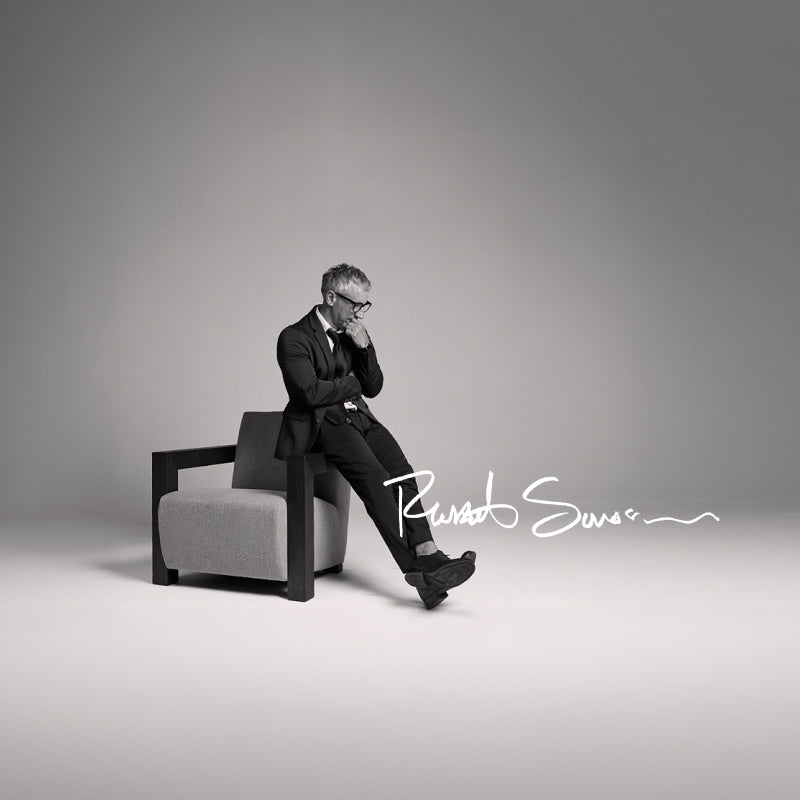
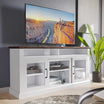
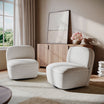
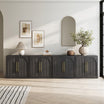
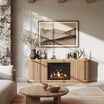


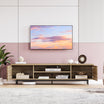
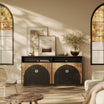
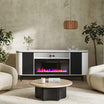
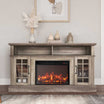
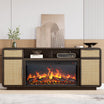
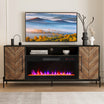
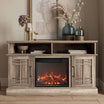
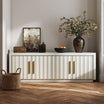
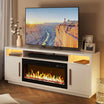
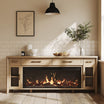
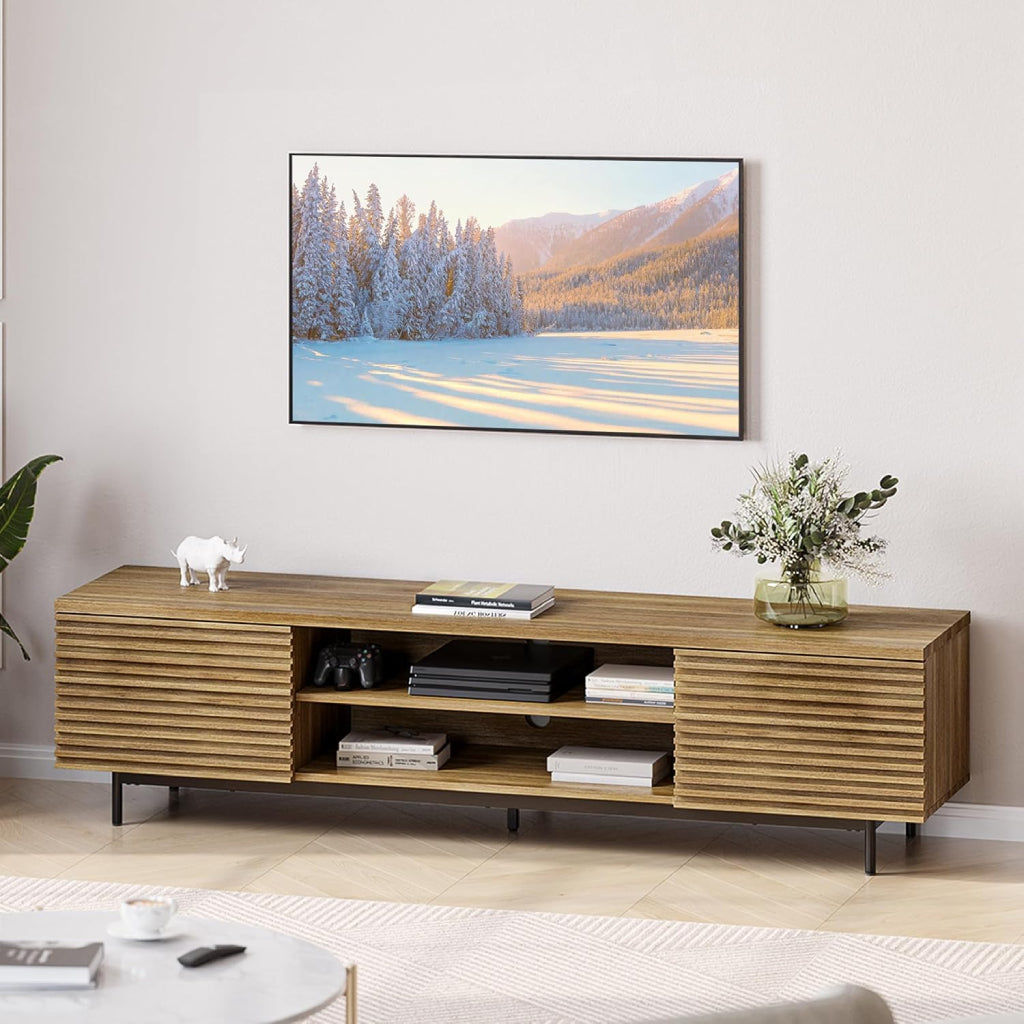
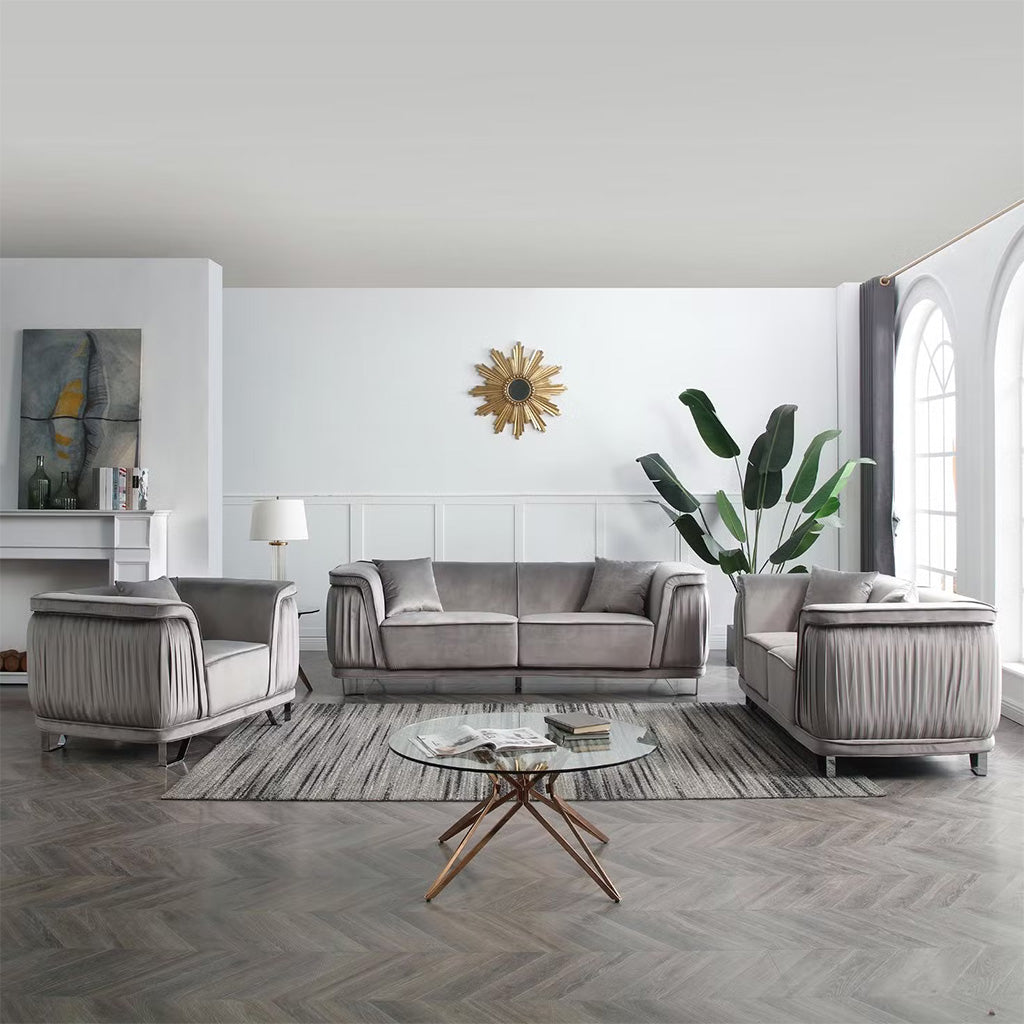
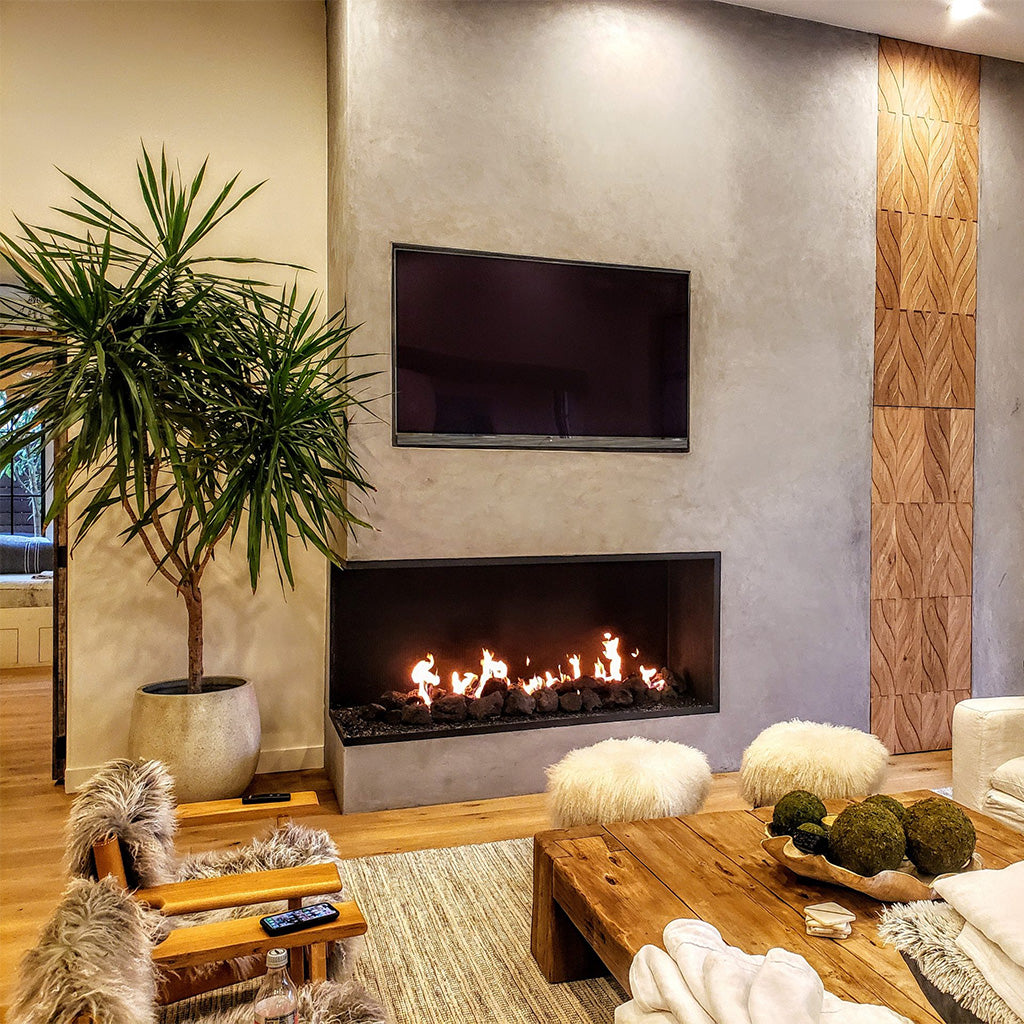
Leave a comment
This site is protected by hCaptcha and the hCaptcha Privacy Policy and Terms of Service apply.